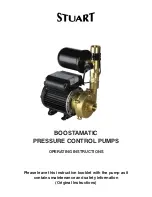
7
The Basin
In Ground Installation of Basins
A. Excavation: Excavate the hole as small as possible, with a minimum recommended 8" diametrical clearance
around the tank. Never place the basin directly in contact with rocks or other sharp objects. Place only fi ne, 1/8"
to 3/4" pea gravel or 1/8" to 1/2" washed, crushed stone as bedding between the basin and the hole walls. Do
not use sand or native soil as backfi ll. Properly compact underneath the basin to provide a solid, level base that
can support the weight of the fi lled basin. It is recommended that the top lip of the basin be level with the fi nished
fl oor.
B. Initial Backfi ll: Only fi ne, 1/8" to 3/4" pea gravel or 1/8" to 1/2" washed, crushed stone should be used around the
bottom of the basin to hold it in place. Do not use sand or native soil as backfi ll. Make the inlet connection as
required for your basin.
C. Inlet Connection: The basins have a 4" inlet molded to the side of the tank. This inlet is sized to accept a 4" no-
hub type coupling. Connect the gravity drainage line from the fi xtures to this hub.
D. Final Backfi ll: Large rocks, clods, and foreign objects should be kept out of the backfi ll material. Only fi ne, 1/4" to
3/4" pea gravel, or 1/8" to 1/2" washed, crushed stone is recommended. Do not use sand or native soil as backfi ll.
Mound the backfi ll slightly and allow for natural settling. Provide access to the basin cover for maintenance and
service.
Do not exert heavy pressure or run heavy equipment on the backfi ll material as this could cause the tank to
collapse.
NOTE: In high water table areas and as an extra pre-caution, add water to the tank up to the bottom of the inlet
of the basin.




































